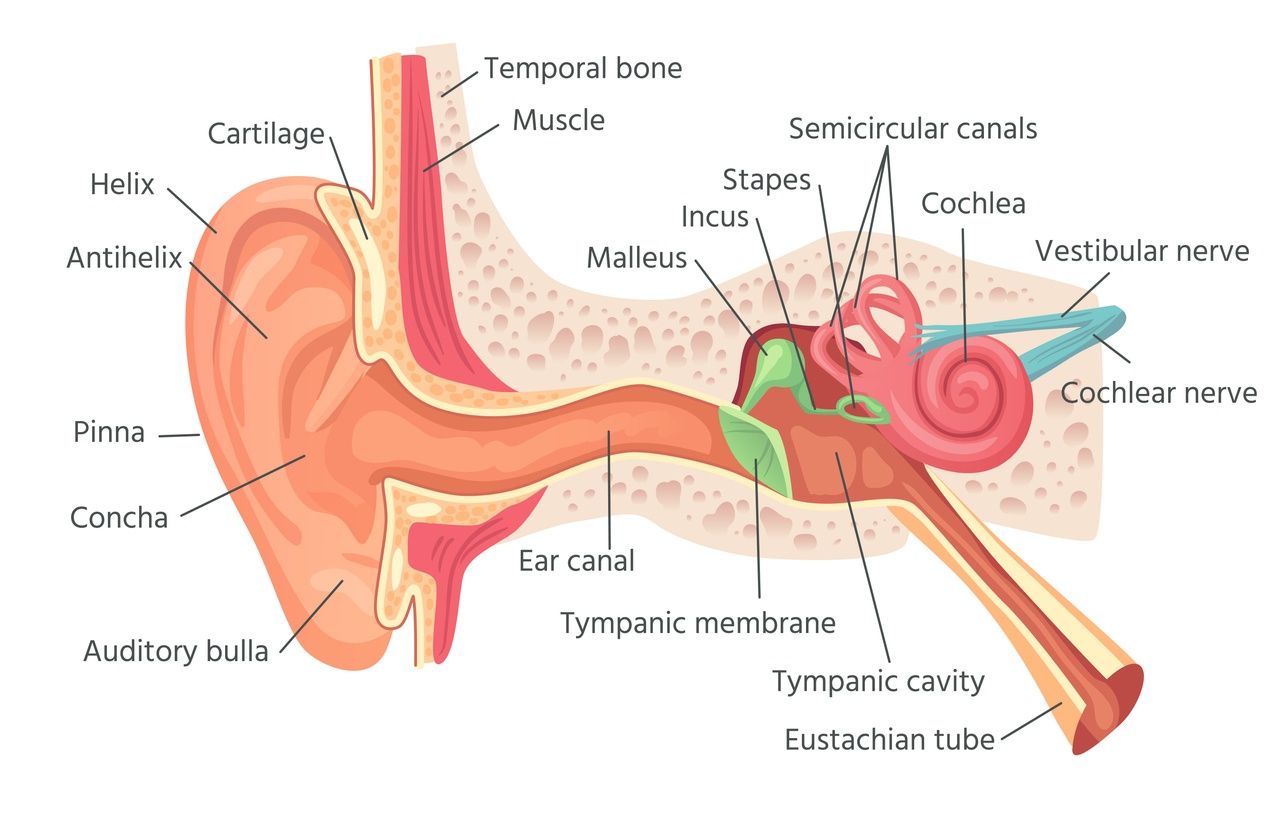What is hearing loss?
Hearing loss is very common nowadays with many causes, from age, genetics, and damage to the ear among the most common. Genetic hearing is the most common cause of hearing loss in babies and children, whilst age-related hearing loss in adults becomes increasingly common over the age of 50, with 8.5% of adults aged 55 to 64 experiencing disabling hearing loss. What are the most common types of hearing loss?
Conductive hearing loss
Conductive hearing loss is a very common form of hearing loss, which occurs when there is damage or blockages present in the outer or middle ear. Generally, the build-up of wax in the ear can be the source of this sort of disorder, which muffles sound. Some types of conductive hearing loss include Otosclerosis and x. Otosclerosis is when the bone from the cochlea grows onto the stapes bone in the middle of the ear, making it much more difficult to hear, whilst Cholesteatoma occurs when tissue grows in the ear that should not be there. This may appear after a chronic middle ear infection or sometimes can be present at birth.
Sensorineural hearing loss
This is the most common form of hearing loss. When the inner ear, hearing nerves or hearing structure in the brain are damaged, sensorineural hearing loss occurs. It is believed that hearing loss that appears in early childhood before a baby can speak is sensorineural and it is more than likely genetic. Sensorineural hearing loss in adults is usually due to aging, with the tiny hair cells in the inner ear becoming damaged, which do not regrow, leaving permanent damage. Loud noises can also play a big role in the development of this form of hearing loss.
Mixed hearing loss
Mixed hearing loss is a combination of Otosclerosis and Cholesteatoma hearing loss, with physical damage or a blockage in the ear making genetic or age-related hearing damage worse. This is the worst form of hearing loss.
How to prevent hearing loss
For many people with hearing loss problems, it can be very difficult to distinguish exactly where the problem could have started, or what could be the exact cause. As you grow older, there are a few precautions you can take to prevent hearing loss:
- Avoid loud noises
- Take care when listening to music
- Protect your hearing during loud events and activities
- Get your hearing tested
One of the biggest threats to your hearing is listening to loud music through earphones or headphones. You must control the volume of these devices, even just turning down the volume a little bit can make a big difference to your risk of hearing damage. It is also recommended to use noise-cancelling earphones or headphones, allowing you to not have the sound up loud whilst still covering up outside noise.
How often should you get your hearing tested?
Hearing tests are certainly at the bottom of the pecking order when it comes to the general public’s medical concerns, with that being said, getting your hearing tested is just as important as getting your eyes tested or going to see the doctor. The frequency of your hearing tests will depend on your age, your occupation and other risk factors.
In the UK, one to two babies in every 1,000 are born with hearing loss in one or both ears. New-borns are tested following birth, by a trained hearing screener and it only takes a few minutes. Then at toddler age, young children are tested again by a public health nurse. It is very important to observe your children’s hearing at a young age.
For teenagers and adults up to the age of 50, it is recommended to get your hearing tested every 10 years. If you are exposed to loud noises at work, for example if you work in construction or with loud machinery it is advised to have your ears tested much more frequently than 10 years. Adults over the age of 50 should have a hearing test every 3 years.
People with hearing loss often feel embarrassed and that they are coping with a condition that others can’t understand. Only one in five people who need hearing aids use them, so this condition should not be taken lightly. In addition, if you wear hearing aids, get them checked twice a year and have your hearing checked every three years. Hearing loss is treatable, and sometimes even reversible. Please take time to get the answers and treatment you deserve.
About the Author…
Zahrah Abdullah
Operations Assistant
During her time as a Youth Worker at Challengers, a charity dedicated to supporting children and young people with disabilities, Zahrah demonstrated excellence in assisting in the delivery of inclusive play activities. She gained knowledge in Makaton, and underwent training in Crisis Prevention/Intervention, specifically focusing on managing challenging verbal and physical behaviours.
Currently holding a key role within Cavendish Homecare’s operations team, Zahrah takes charge of ensuring the seamless set up of new cases, managing the distribution of personal protective equipment (PPE) to clients and the nursing and carer teams, organising staff training and providing crucial support to Nurse Managers.

 Back
Back
